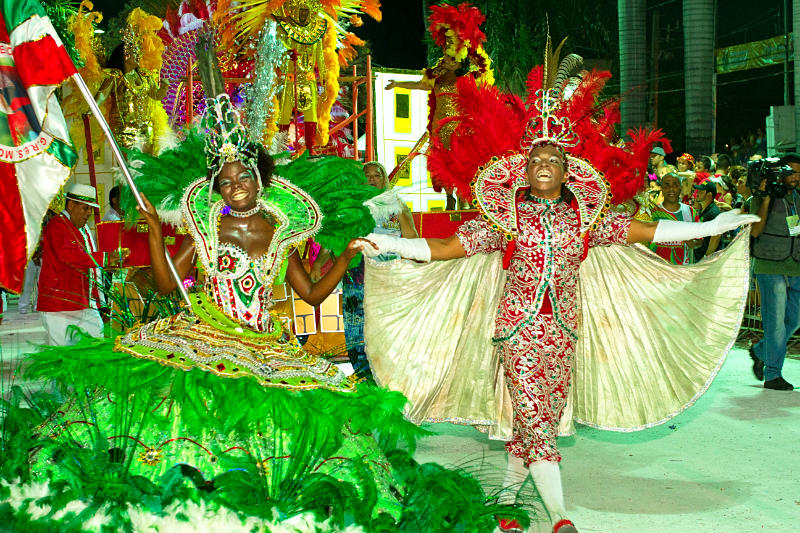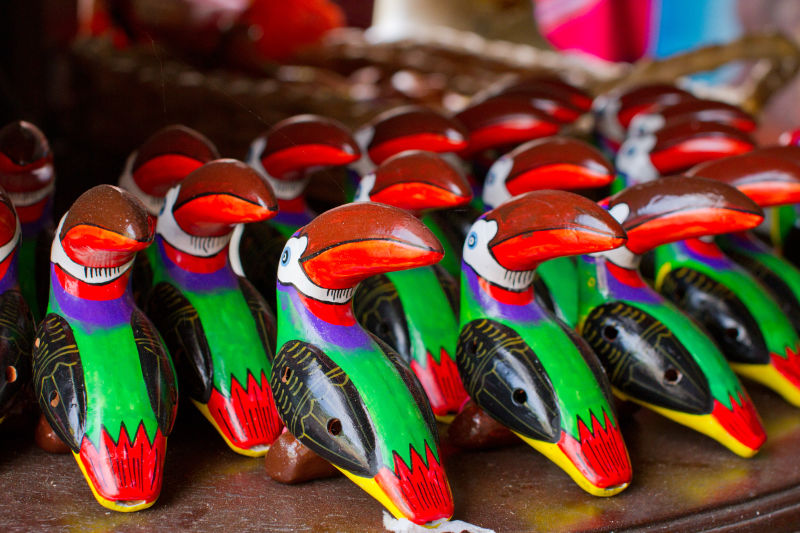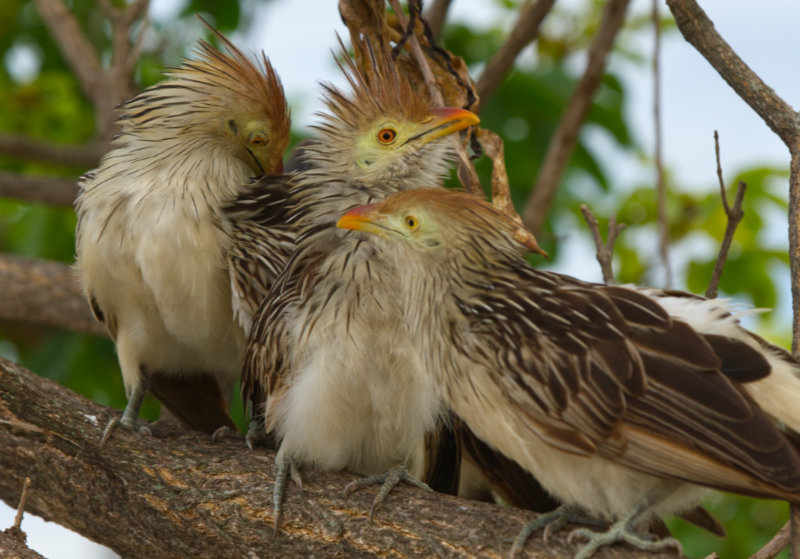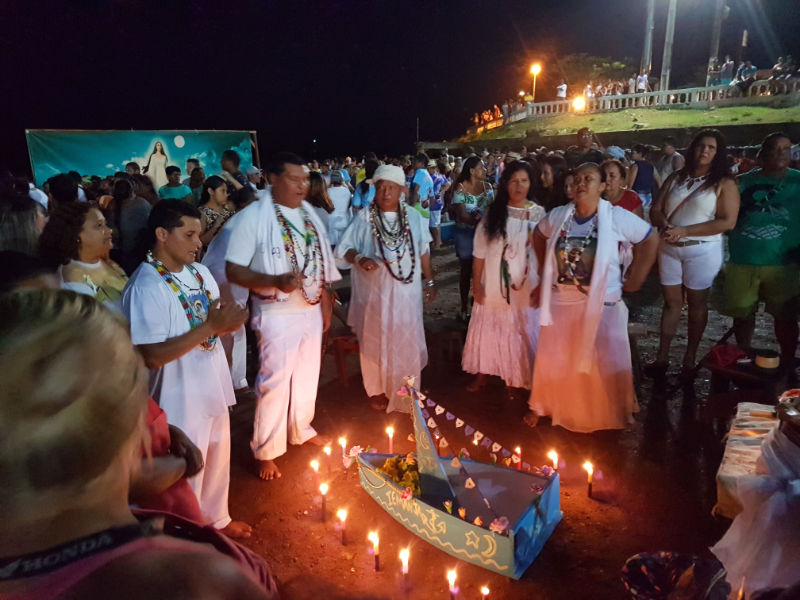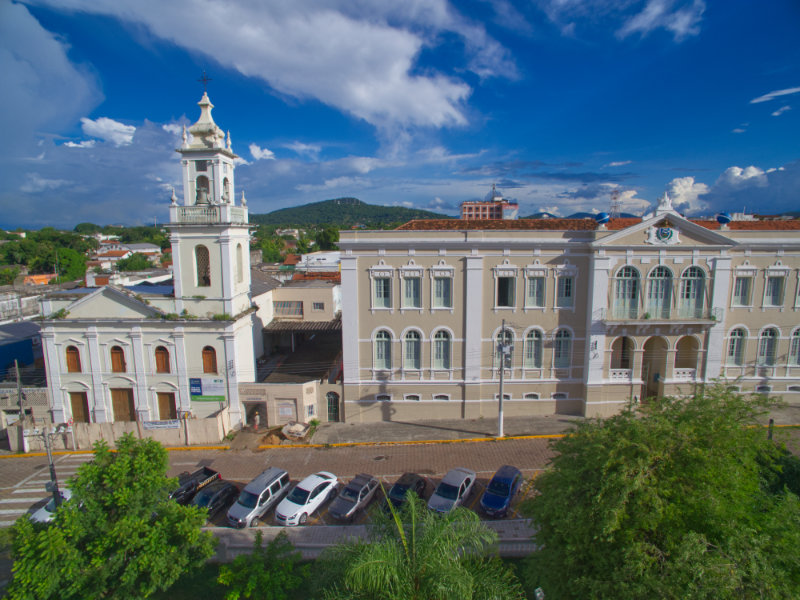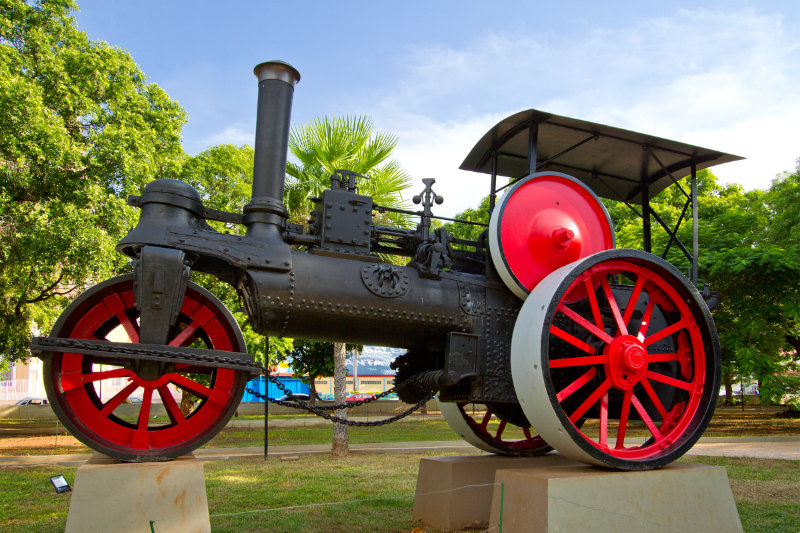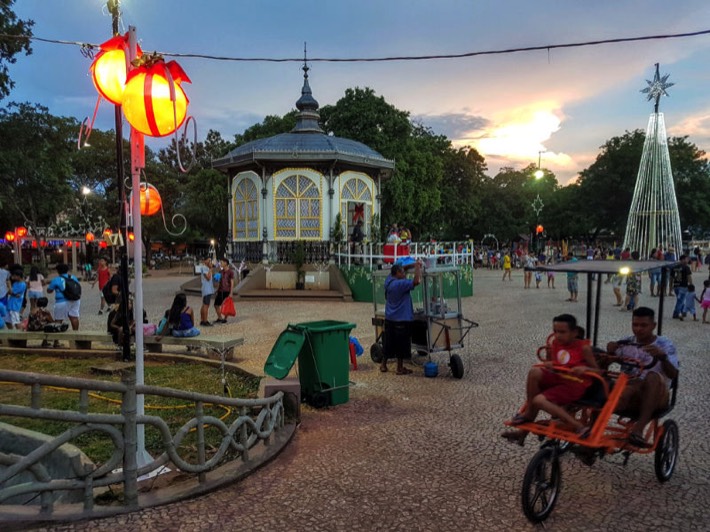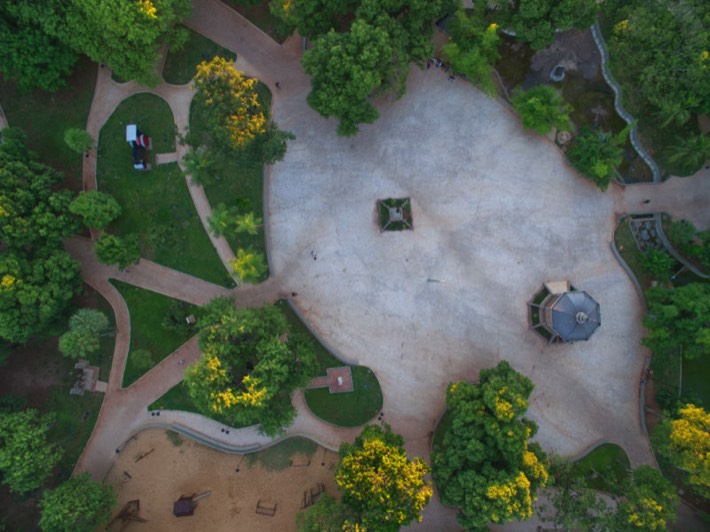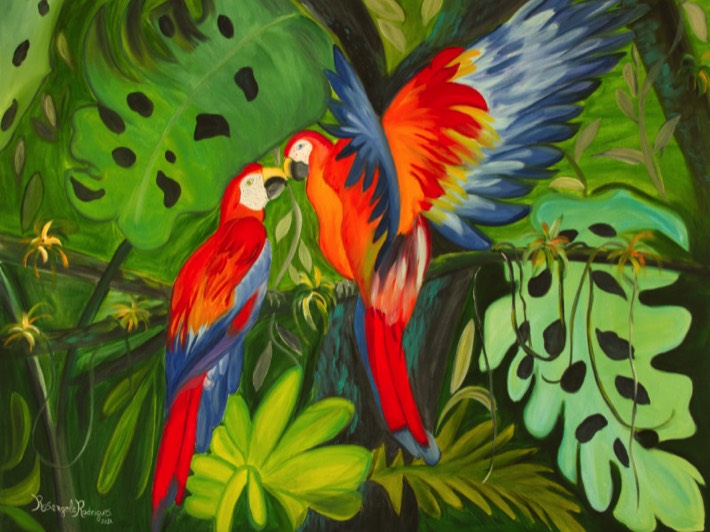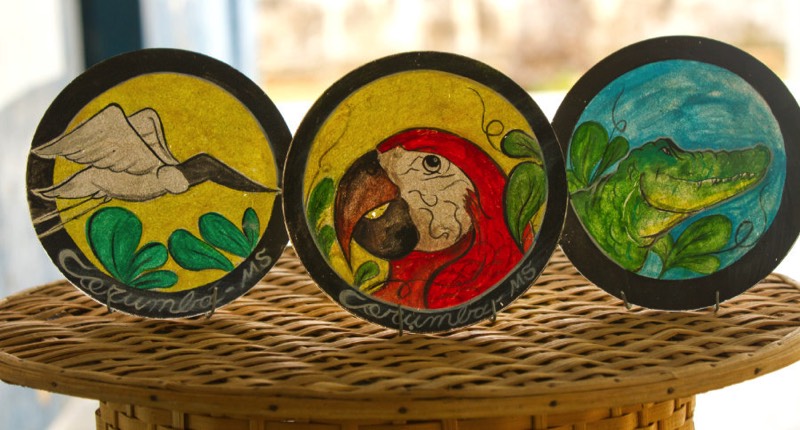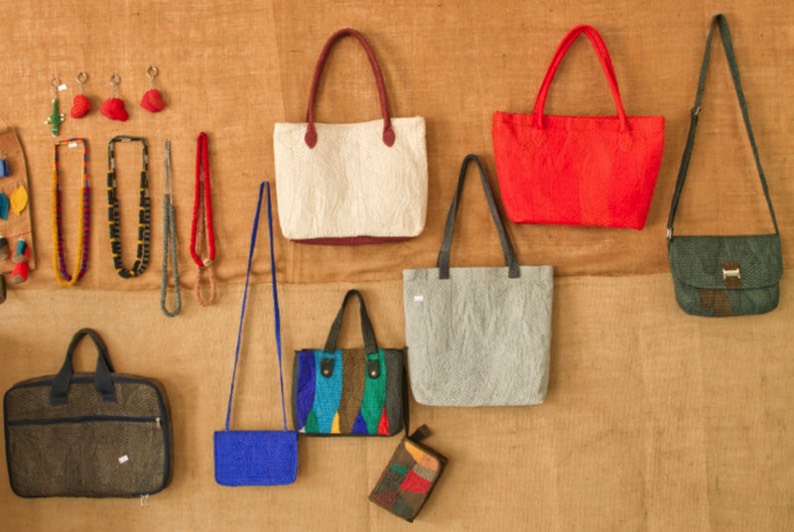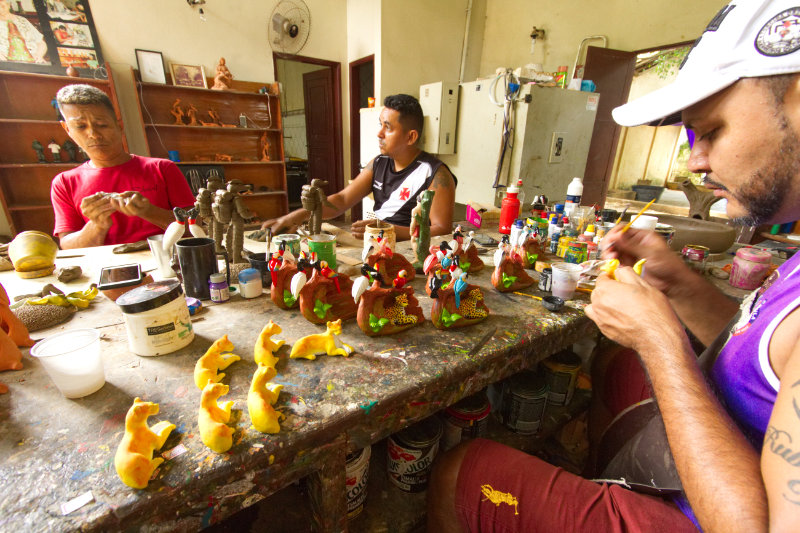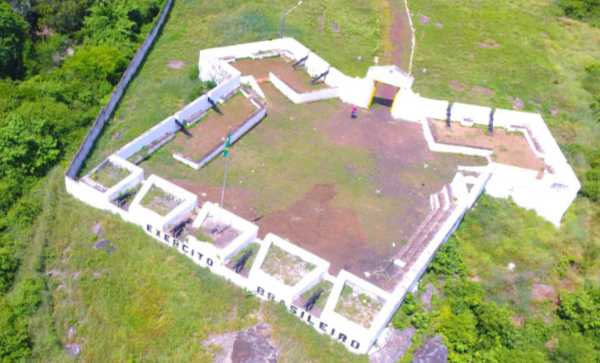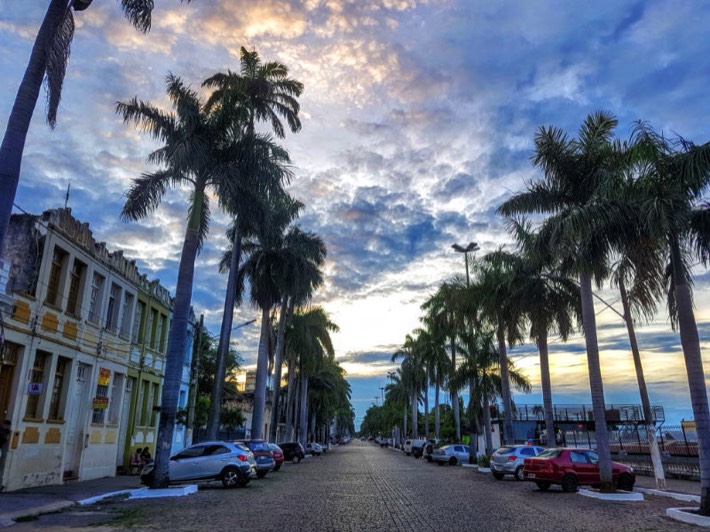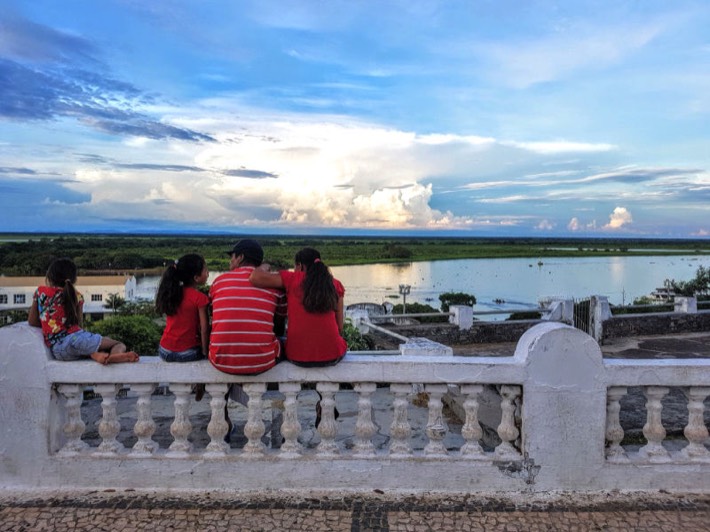Corumbá
Sights and Events
Although it's just small town, Corumbá has plenty of sights and events to attract would-be visitors.
Corumbá Carnaval
Avenida General Rondon, overlooking Corumbá's historic waterfront.
Annual event. Late-Feb/Early-Mar. Dates vary slightly each year.
Although much smaller than the famous Rio Carnaval, there's still plenty of spectacle - plus it has the advantage of allowing you to get closer to the action or participate directly. The town's annual celebrations grew with the establishment of military bases to guard the frontier after the Paraguayan War. Personnel for the installations were drawn largely from Rio de Janeiro, bringing their carnaval traditions with them.
There are currently around 10 samba schools competing for two nights in the parade area along Avenida General Rondon. A third night is reserved for cultural carnaval celebrating local community organisations. This, together with pre-carnaval block parties and other events, typically run over a two week period. The event regularly attracts visitors from across the region, including the Campo Grande, nearby states, and Bolivia.
See main article: Carnaval de Corumbá
Cristo Rei do Pantanal
Morro São Felipe
Dawn to Dusk
Giving the town a small flavour of Rio de Janeiro, Cristo Rei do Pantanal is a 12m statue and lookout installed on the São Felipe hill overlooking Corumbá and the Pantanal. The statue was made by the local artist Izulina Xavier. The easiest way to visit is by private car or taxi.
Porto Geral
Porto Geral is the local name for the riverfront. During the town's heyday this was an area of busy warehouses and trading companies. It's much quieter today. Most old buildings have seen better days - but some are now being restored to former glory or, at least, given a fresh coat of paint. They're now occupied by shops selling Pantanal souvenirs or selling fishing tours on the Barco-Hotels which line the riverfront. It's a good place to watch the sunset, watch the river traffic, or observe local bird life such as guira cuckoos, parrots, and an occasional heron.
Museu de História do Pantanal
Rua Manoel Cavassa, 275
Tues-Sat: 1pm to 5pm. Closed on Sundays
Located on the riverfront, this is worth a visit to get insights into man's 8000 year history in the Pantanal region. It also includes photographs and paintings by local artists. The museum is located in the old Wanderley, Baís & Company building which was restored and reopened in 2008.
Memorial do Homem Pantaneiro
Porto Geral. Casa Vasquez & Sons building.
Rua Ladeira José Bonifácio, 171
Weekdays: 8am - 11:30 am and 2pm - 5:30pm
Located in the recently restored Casa Vasquez & Sons building, on the road descending to the riverfront, this houses several other exhibits, although seems irregularly open. The building itself dates from 1909, and was designed by the Italian architect, Martino Santa Lucci. It has a large open hall downstairs with a double-height ceiling, a mezzanine, and a large wooden staircase. The inside is decorated with murals and mosaic tiles. The building was restored in 2006.
Museu do Pantanal
Instituto Luis de Albuquerque, Praça da República
Weekdays: 8am - 11:30 am and 1pm - 5pm.
Closed weekends
Housed within the large neoclassical building, next to the church, which overlooks the Praça da República. The building hosts two libraries and a small museum containing a collection of archaeological objects, artefacts from local Indian tribes (Kadiwéu, Terena and Bororó), traditional crafts and artworks in leather and clay, old cattle branding irons, and several artefacts from the Paraguayan War - such as the sword of General Antônio Maria Coelho who led the assault to recapture the town. It also includes personal objects from pioneer settlers including Marshal Cândido Rondon.
Igreja de Nossa Senhora da Candelária
Praça da República
Constructed in 1885, this is Corumbá's main church. It overlooks the Praça da República, and caused great controversy before it was even built - triggering the curse that the Italian priest Frei Mariano invoked on the town. Maintenance on the church had been neglected in recent decades, and was closed in June 2016 when parts of its ceiling collapsed. It is currently undergoing restoration and is set to reopen later in 2019.
Praça da Independência
This is a park in the town centre occupying land that was formerly used for a city zoo. It includes several objects dating to the days of the Brazilian Empire - including a band gazebo presented to the town by the Austro-Hungarian Empire, and a set of four Italian marble statues representing the four seasons, in addition to several other monuments. The trees within the park are predominantly native plants such as carandá, bocaiuva and ipê-roxo.
Casa do Artesão
Rua Dom Aquino, 405
From 8am - 11:30 am and 2pm - 5:30pm
Saturday: 7:30am to 11:30am. Closed on Sundays
Founded in 1975, the Casa do Artesão occupies the old city prison which was closed in the 1970s. Local artisans rent the old cells - using the them to display, sell, and produce their work. This includes works in leather, wood, ceramics, weaving, painting, embroidery, indigenous handicrafts and homemade liqueurs.
Casa do Massabarro
Rua de Cacimba, Bairro da Cervejaria
From 8am to 11:30am and 1:30pm to 5:30pm.
Saturday from 8am - midday. Closed on Sundays.
Casa do Massabarro is a ceramic studio specialising in Pantanal-themed figurines. You'll find the figurine available in all the local souvenir shops - but a visit to the studio is worthwhile to learn more about the people who make them. Casa do Massabarro is a non-profit social education programme founded in 1985. The aim was to encourage local children from poorer communities to learn art - while also providing positive role models, stability and a safe space. The original criteria to join was for children to be aged between 9 and 14 years, and enrolled in school … although some of those original children are still actively involved.
The artworks made are typically representative of the flora and fauna of the region - but also include religious works and some special commissions for local army, navy and medical cadets to remember their time training in the Pantanal. Raw materials are sourced from a local brick factory - with broken bricks being reverted to clay and then used to produce the figurines. Artworks are available for sale, with 80% going to the artist, and 20% back to the association. In 1991, the artworks (and artists) caught the eye of legendary Rio de Janeiro Carnaval organiser Joãozinho Trinta, who twice asked them to decorate parade floats for the Rio samba schools Beija-Flor and Viradouro. Casa do Massabarro is next door to Eco Parque Cacimba da Saúde - a small sustainable community located around a clearwater spring that's said to have medicinal properties.
Sunday Market
Rua Ladário, between Rua Delamare and Rua 13 de Junho
Sunday mornings
An busy open air market is run every Sunday along Rua Ladário, between Rua Delamare and Rua 13 de Junho. Most of the vendors are Bolivian, who bring in fresh produce from their farms across the border - although it also includes cheap clothing, footwear, consumer goods (mostly very poor quality items from China), and lots of pirated CDs and DVDs. It's worth a visit if only to sample the local snacks such as pasteis, and freshly squeezed sugar cane juice.
Forte Junqueira
17º Batalhão de Fonteira. Rua Cáceres, 425
Mon-Sat: 9am - 5pm. Closed Sundays
This is located within the army base of the 17th Frontier Battalion - so visits need to be arranged through the Army information Office onsite. This means that there are a few simple rules concerning appropriate dress - such as sensible footwear and no shorts. Other than that, the Army is surprisingly friendly and helpful. Forte Junqueira in located on a high cliff overlooking the Pantanal and Paraguay River. It's one of five forts constructed immediately after the Paraguayan War, as part of a plan to ensure the defensibility of Corumbá. The walls are a half metre thick - although this extends to 3m for the side of the fort overlooking the river. The armament consists of 12 80mm Krupps cannons manufactured between 1872 and 1874.
Banho de São João
Porto Geral riverfront.
Annual event. Late June.
Baptism of St. John. This religious festival which has been a local tradition for a century or more. A small statue of St John the Baptist is carried in a procession to the river and then ceremonially baptised. The local port is richly decorated - with music acts and celebrations. Occurs annually in mid/late June coinciding with mid-winter.
See Travel article: Banho de São João in Corumbá.
Festival América do Sul
Various locations around Corumbá.
Annual event. May or August (varies)
With its position on the frontier, Corumbá is aiming to position itself as a gateway for trade between Brazil and the rest of South America - with most countries having signed up to the South American MercoSul (or MercoSur) trade block. The annual Festival of South America is a celebration of South American culture with shows, exhibits, artists, fairs and organised debates from across the continent. It attracts up to 100,000 visitors per year. The festival typically occurs in May (although local government has occasionally swapped the schedule to August).
Avenida General Rondon
Avenida General Rondon, located just above the Porto Geral riverfront.
In late February or early March, this area gets transformed into the samba parade ground for the town's annual Carnaval celebrations. For the rest of the year its pretty much just a regular street. There's not a huge amount to do - although there are a couple of bars and a questionable nightclub (best avoided). The real drawcard for Avenida General Rondon is that (aside maybe from Cristo Rei do Pantanal) it offers the best spot in town to relax and watch the sunset over the Pantanal. There's a small park, Praça Generoso Ponce, overlooking the Porto Geral. If you're lucky you might also get to see toucans in the nearby palm trees.
Select from the options below to learn more about Corumbá.







